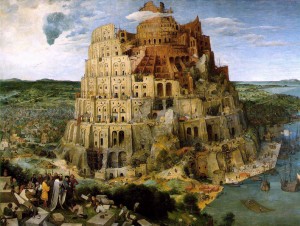Pour connaitre; contre savoir
Gazing at a great painting for the first time feels a lot like introducing myself to someone fascinating and a little mysterious. Actually, that’s exactly what’s going on. In a sense, I’m becoming friends with the person who created it, and a great painting conceals and reveals itself, as an object of appreciation and understanding, the way its creator would. And what you “learn” from it is analogous to what you learn by becoming friends with someone. It’s more complicated than “knowing.” If the painter has managed to subconsciously fuse his or her life into the work—in other words, insofar as it’s actually a work of art—the painting becomes a portal into who that person is. What it literally represents is beside the point. If the work’s purpose is to illustrate some conscious notion the artist holds—the sordid and oppressive nature of the male gaze, the hegemony of European culture over the Southern hemisphere, the emptiness of celebrity, what have you—it will do what it was meant to do, if it’s good. But it won’t be doing what painting is uniquely qualified to do. Once you get the message, why look twice?
If you’re a genius, like Brueghel, you can paint an image with a distinct, historical or social purpose—to subvert the Spanish occupation of the Low Countries, say, (aim big, right?), or offer a vision of a Biblical parable—and yet your abilities overflow the task at hand, and you create images far more mysterious and powerful than their intent. They reward long, repeated looking. They reward your friendship. Mostly, though, when the medium is just a message, that’s all you get. It’s an illustration. Blake said that the work of the imagination takes less time than the heart requires to beat once. A great painting conveys itself to a viewer before a single thought can arise about what’s being shown and seen. And then, as you continue to look, you see more and more, without really knowing what you see in the sense that you know the time of day or who won the Super Bowl. You get closer and closer to the painting, knowing it in a way the French mean by connaitre, rather than savoir. You develop a complex emotional and perceptual relationship with it. If you can get to know your little three-year-old, Emily, by deconstructing her, well then, that should work just fine for you with, say, a Sisley. But you can’t and it won’t. Painting is about apprehending the wholeness of a world, of a human being. You don’t get there by thinking.

I like this and it reminds me of Sontag’s gesture “Against Interpretation.” The experience of art is sensuous, and never merely cognitive. The popular modes of art evaluation tend not to recognize or even develop a vocabulary to properly address the embodied experience of art.
I wonder whether you go far enough in suggesting the artistic apprehension is the discovery of a human being. The world is also made up of objects, as well as human bodies and subjectivities. Objects like paintings have their own presence and deserve to be taken up on their own terms, regardless of the Brueghelian genius or Warholian nincompoop responsible for their creation. Isn’t it our tired concern with artist psychology that obsesses us with art’s “message?”
I agree entirely that we don’t have that vocabulary. It’s sensuous, but also subconscious, and I think that’s, in large part, how visual art connects–in the instantaneous, subconscious way. It’s a different way of apprehending another person–the artist–but also a way of stepping back and having a brief glimpse of the whole, not just the parts, of human experience. Or at least the sense of “wholeness.” Right: the message is what you extract when you theorize about the artist’s conscious intent, when that should be the last thing of interest, except in conceptual work, where the idea, not the thing, is all the work is about.
I need to read Sontag, because I’m going to keep pursuing this line of thinking about painting. I keep arriving at the thought that somehow in the West we’ve turned the whole thing upside down and placed abstract thought at the top of the pyramid and sensory perception at the bottom, when actually sense perception is, in some ways, not just the foundation, but the thing itself. Not a “life of the senses” but that direct perception is the beginning and the end–its the “whole point”. It seems we’re taught that it’s just the raw material which thinking digests and analyzes and shapes so that we can make use of it, when actually it’s what we’re here for: to look, listen, touch, smell and there’s an intelligence inherent in perception itself, before any conceptual business gets started. It’s about a sense of “meaning” that isn’t disembodied and abstract. I don’t mean hedonism, but something like the “seeing directly into the way things are” of Zen. We want the body to be the servant, and the mind the master, when it’s actually just the other way around. But we don’t want to face that, because of our mortality . . .